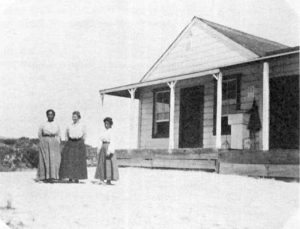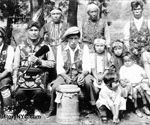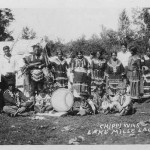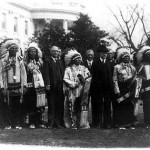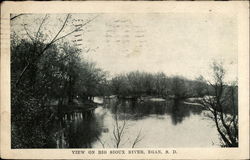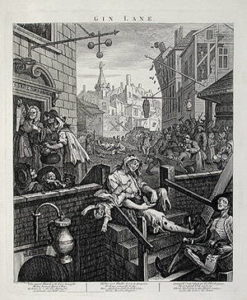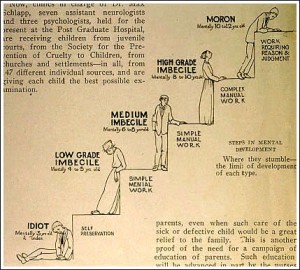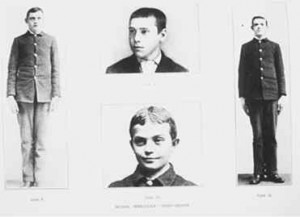When sugar camps were ready (see last post), tree tapping began as soon as the sap started running. Though only experts tapped trees, these could be either men or women, and an individual could make up to 300 tappings a day.
In the Chippewa method of making sugar, workers put down sap dishes in the early morning and gathered them when they were filled. After taking the sap back to camp, workers poured the liquid into kettles or into troughs at the door of the tipi used for making the syrup. Other workers heated the sap in small kettles before pouring it into larger kettles so that all the sap could be heated gradually. The sap in the large kettles would then be boiled until it thickened, which could take all night.
When it was thick enough, the sap was strained from a full kettle into an empty one through a mat woven of basswood bark. (In later days, burlap was used instead of the mat.) After the kettles were cleaned, the syrup was reheated; women placed small bits of deer tallow in with the syrup to keep the sugar soft. At the proper consistency, the syrup was transferred to a granulating trough and worked with a paddle to make sugar.

Chippewa Indians With Maple Sugar in Birchbark Containers, 1909, courtesy University of Minnesota Duluth
All of this was hard work, but everyone enjoyed the end product. Women stored sugar made from the last run of sap in makuks (birchbark containers) buried in the ground. This valuable product could last for a year if properly covered with bark and boughs to keep it fresh.








